-
 1
1
Case Number : Case 1644 - 13 October Posted By: Guest
Please read the clinical history and view the images by clicking on them before you proffer your diagnosis.
Submitted Date :
‘2 year old girl with area of reduced hair growth in parietal scalp, 2 biopsies from scalp’. Images 1,2, 3- vertical sections. Images 4,5,6,7- horizontal section at level of isthmus. Images 8, 9, 10- horizontal sections at dermo-subcutaneous junction
Case Posted by Dr Arti Backshi
Case Posted by Dr Arti Backshi


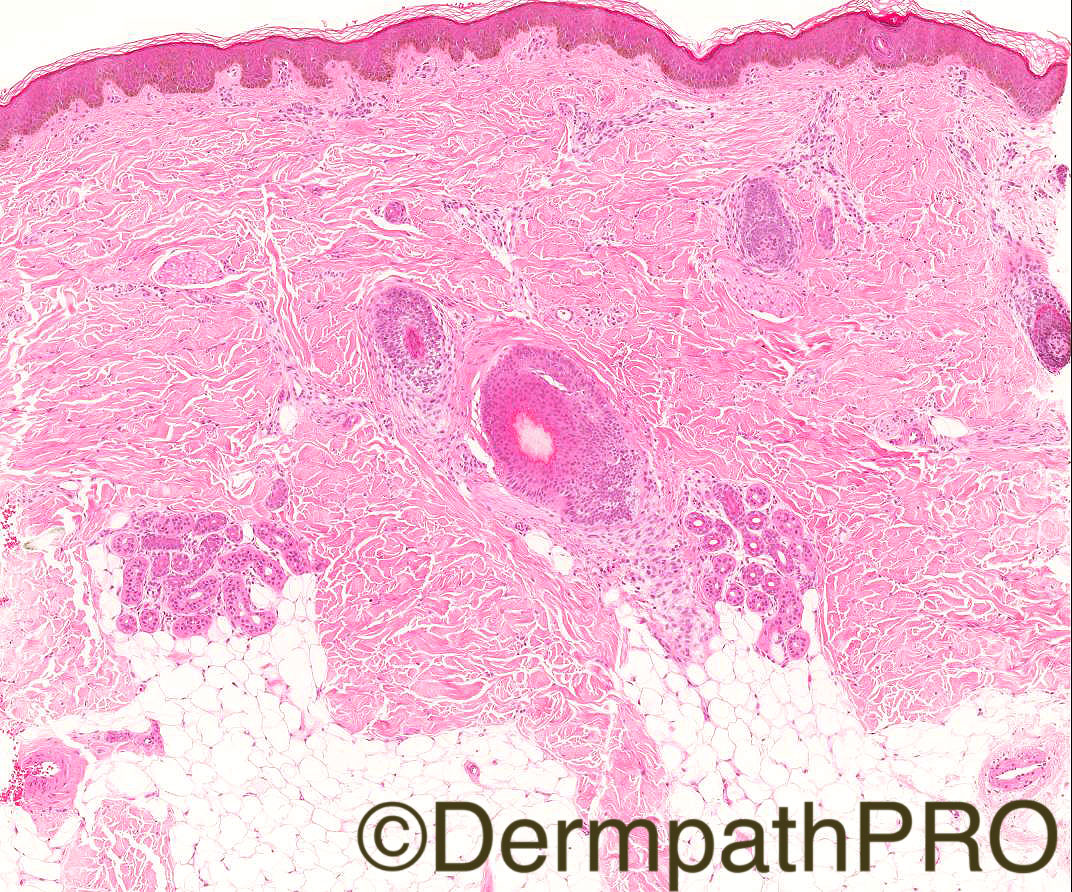
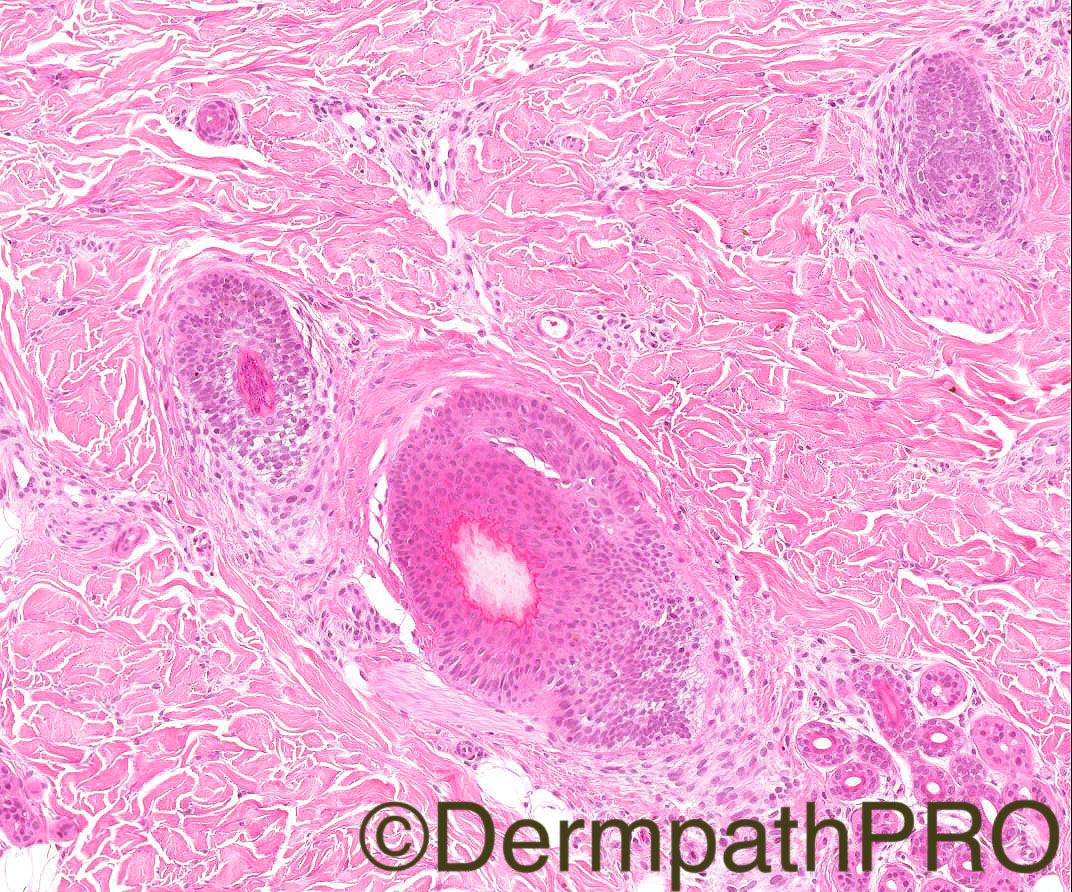
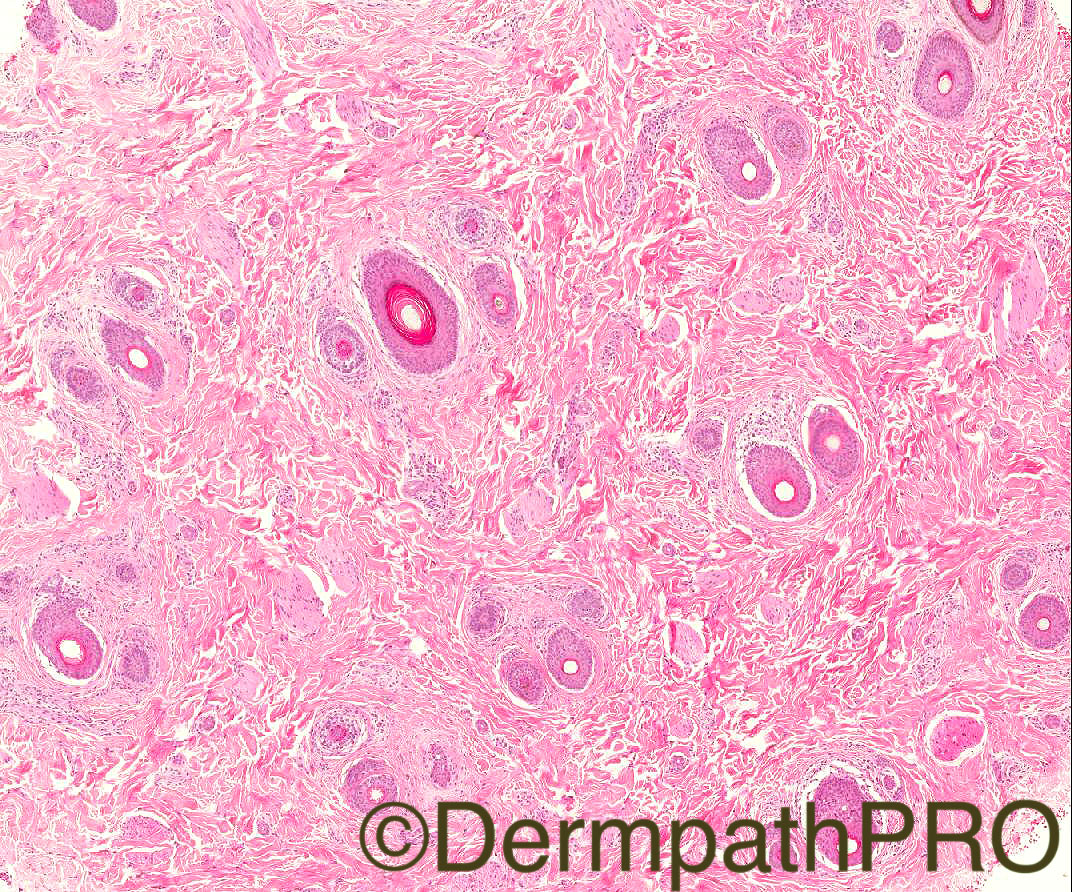
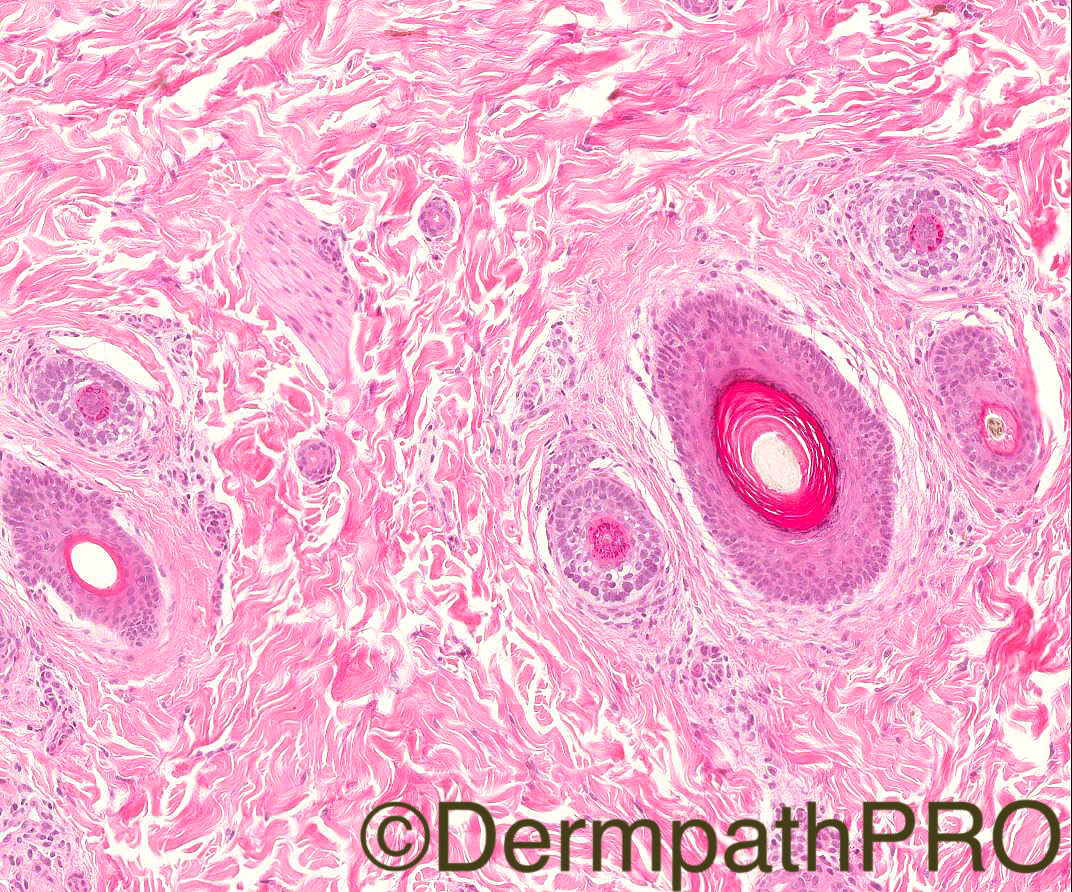
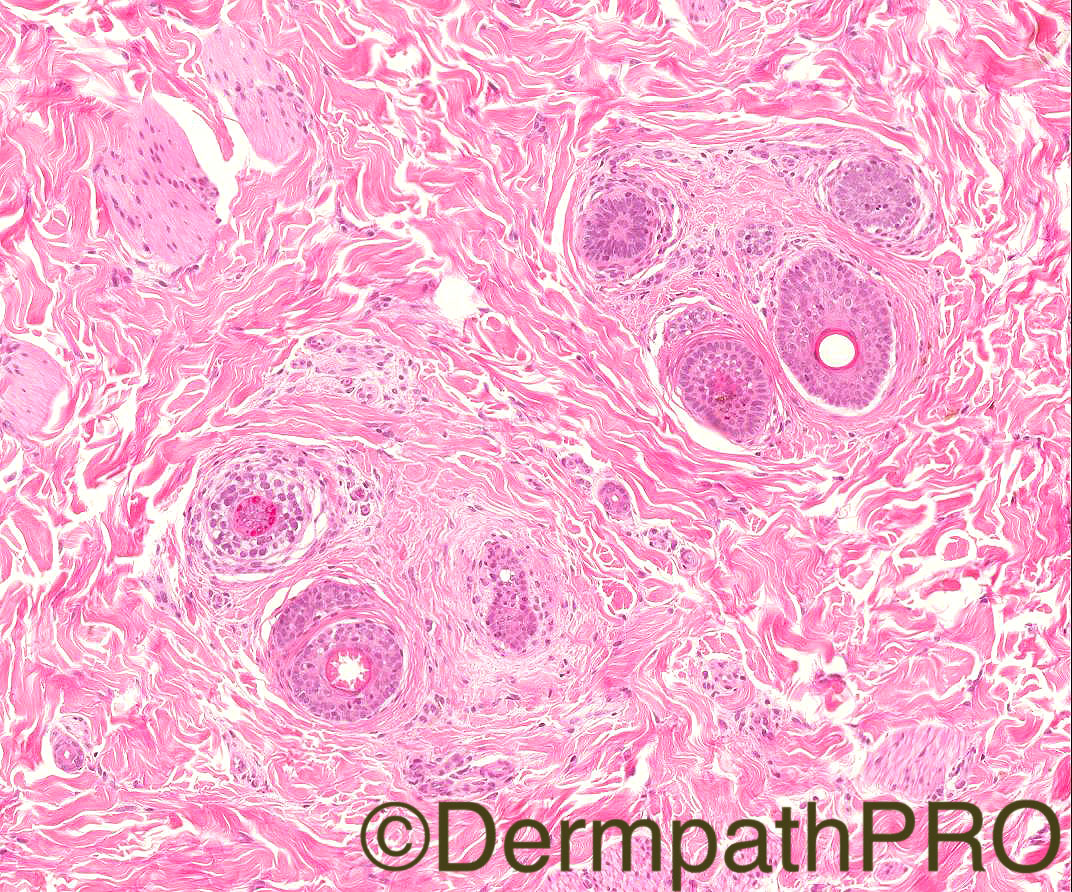
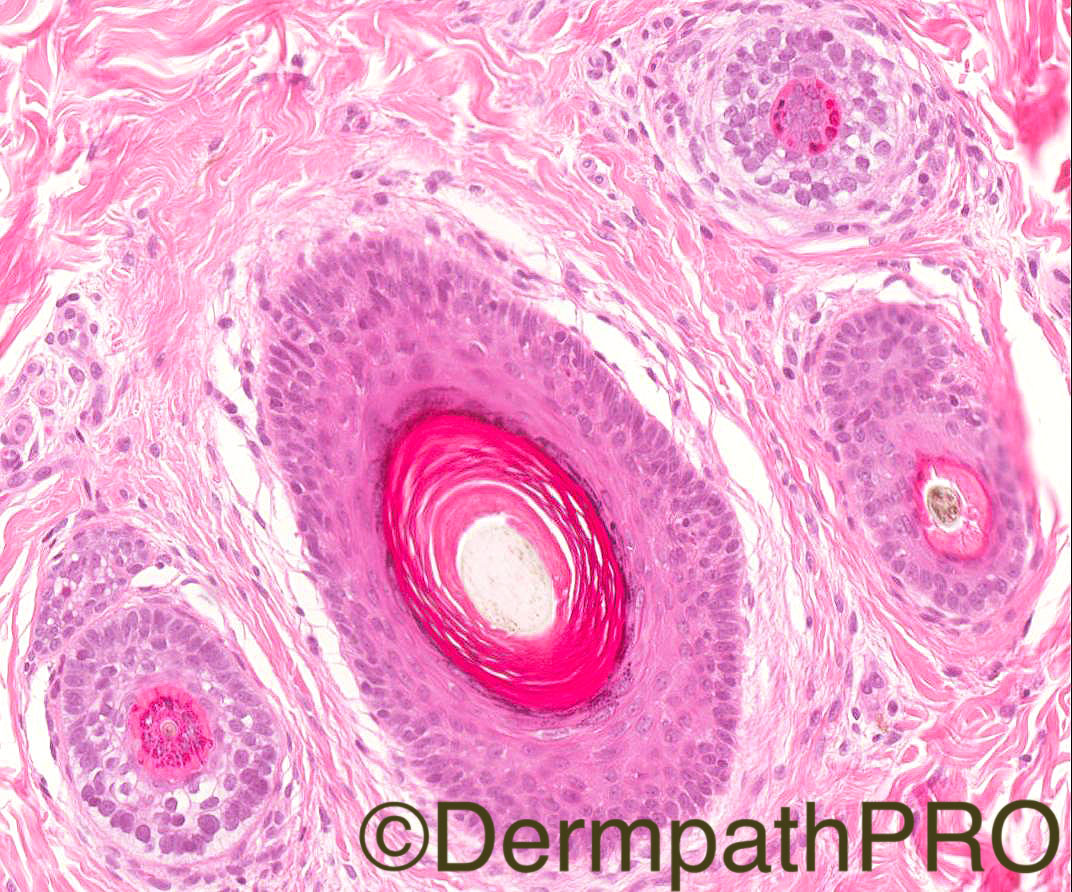


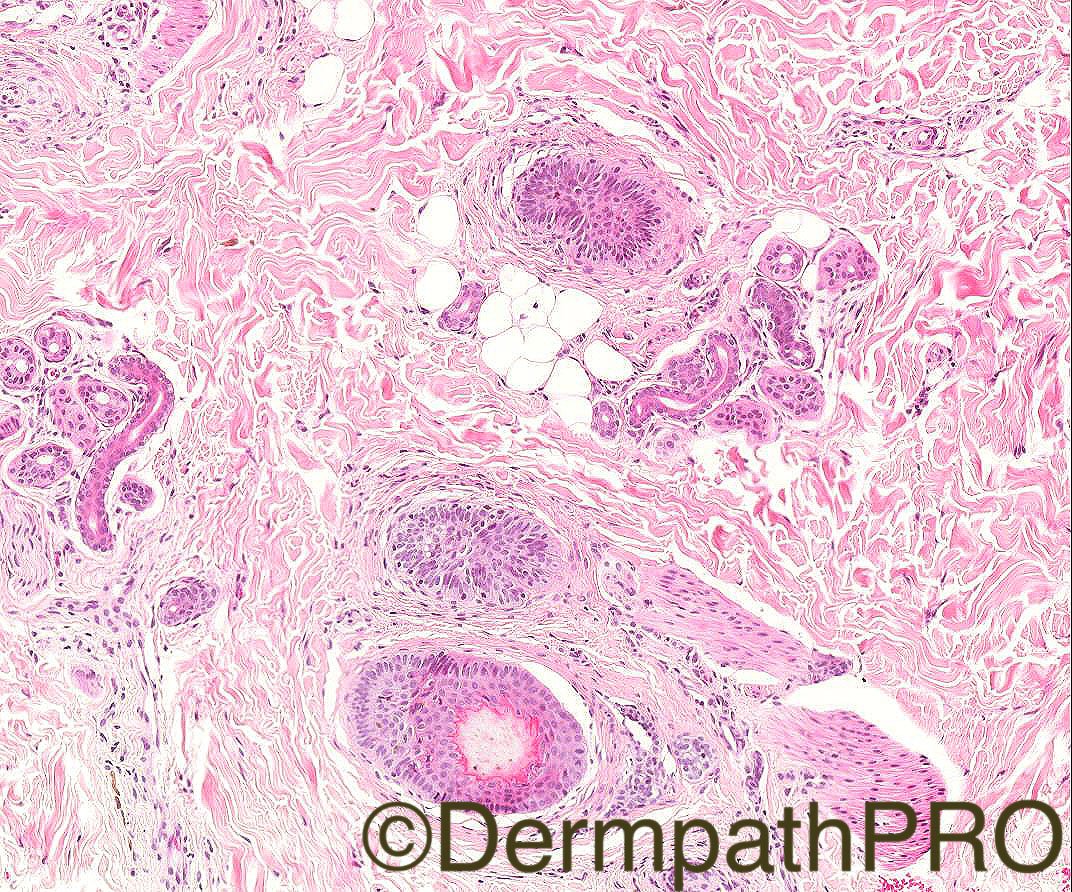
Join the conversation
You can post now and register later. If you have an account, sign in now to post with your account.